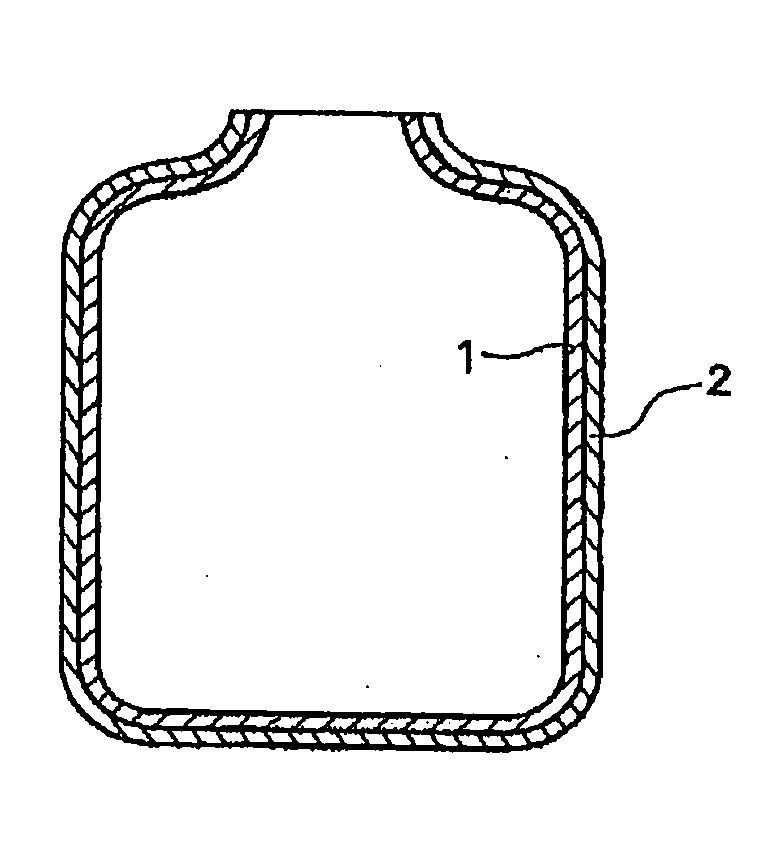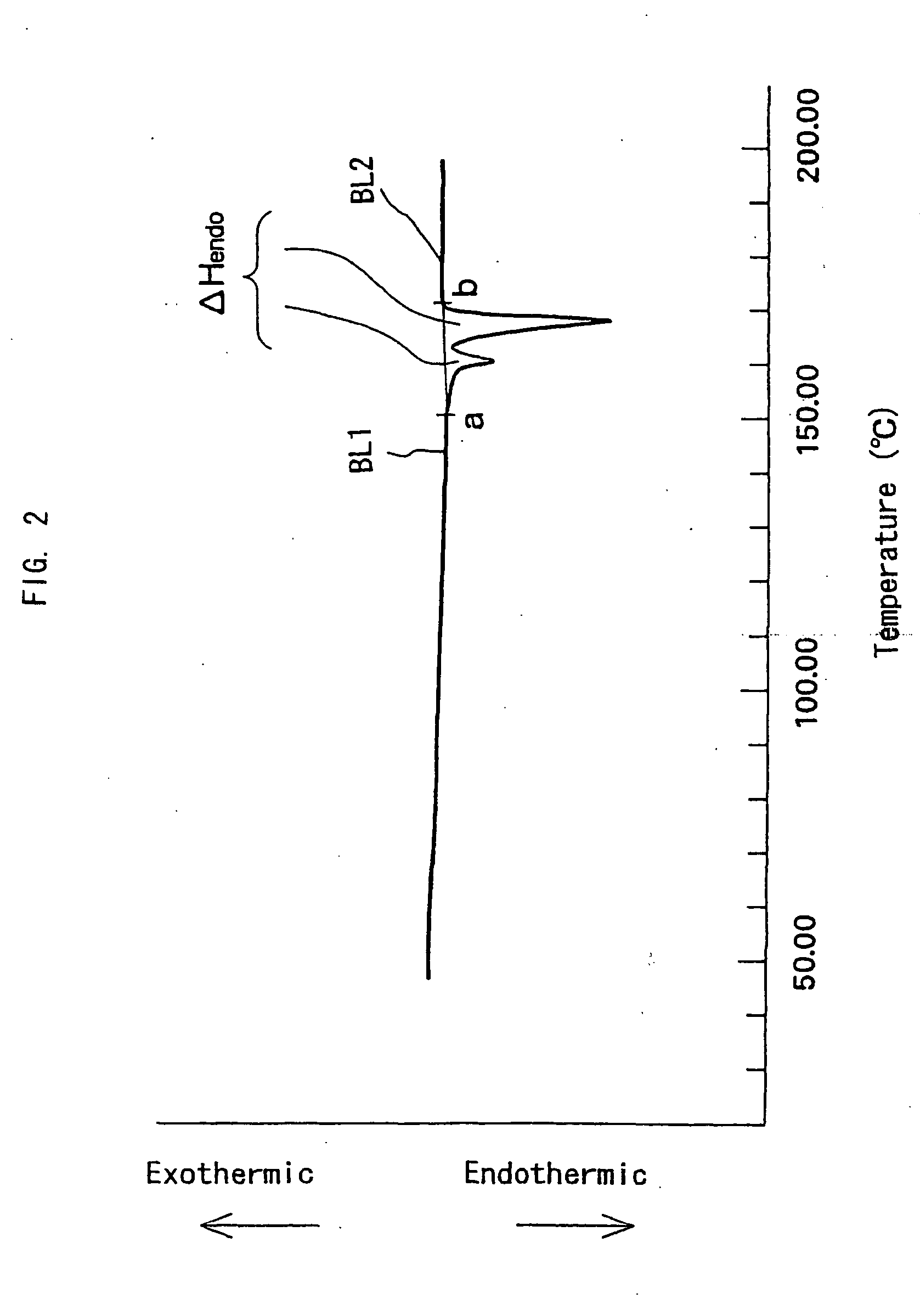Polylactic acid resin foamed molding and process for manufacturing the same
- Summary
- Abstract
- Description
- Claims
- Application Information
AI Technical Summary
Benefits of technology
Problems solved by technology
Method used
Image
Examples
embodiment-i
(i) Embodiment-I
[0037] The difference (ΔHendo:2° C. / min−ΔHexo:2° C. / min) between the endothermic calorific value (ΔHendo:2° C. / min) and the exothermic calorific value (ΔHexo:2° C. / min) obtained by heat flux differential scanning calorimetry (heating rate of 2° C. / min) of the molding's foamed layer of the foamed molding in Embodiment-I of the present invention is 10 J / g or more.
[0038] The term “exothermic calorific value (ΔHexo:20° C. / min)” as used herein means the amount of heat generated when the crystallization of a sample is promoted by heat flux differential scanning calorimetry at a heating rate of 2° C. / min.
[0039] The molding's foamed layer of which crystallization proceeds at higher rates has the smaller exothermic calorific value (ΔHexo:2° C. / min).
[0040] The term “endothermic calorific value (ΔHendo:2° C. / min)” as used herein means the amount of heat of fusion when the crystals of a sample are fused by heat flux differential scanning calorimetry at a heating rate of 2° C....
embodiment-ii
(i) Embodiment-II
[0076] In the manufacturing process of Embodiment-II, the polylactic acid resin to be fed to the extruder has a melt tension at 190° C. of 3 cN or more, a water content of 300 ppm or less and an exothermic calorific value (ΔHexo:−10° C. / min) obtained by heat flux differential scanning calorimetry (cooling rate of 10° C. / min) of 20 J / g or more.
[0077] Further, the MFR of the polylactic acid resin is preferably 0.1 to 10 g / 10 min.
[0078] The measurement methods of the above melt tension, the exothermic calorific value (ΔHexo:−10° C. / min) obtained by heat flux differential scanning calorimetry at a cooling rate of 10° C. / min and MFR are the same as those described in Embodiment-I.
[0079] When the melt tension of the polylactic acid resin used is 3 cN or more, the destruction of cells hardly occurs and the drawdown can be prevented at the time of obtaining the cylindrical body's foamed layer advantageously. From this point of view, the melt tension of the polylactic aci...
embodiment-iii
(ii) Embodiment-III
[0096] The process for manufacturing a polylactic acid resin foamed molding of Embodiment-III comprises the steps of feeding 100 parts by weight of a polylactic acid resin having a water content of 300 ppm or less (including “0”) and an endothermic calorific value (ΔHendo:row) obtained by heat flux differential scanning calorimetry (heating rate of 2° C, / min) of 10 J / g or more and 0.1 to 1 part by weight of an organic peroxide to an extruder to heat and knead them together so as to obtain a molten resin composition, injecting a physical blowing agent into the extruder to knead it with the molten resin composition so as to obtain a foamable molten resin composition, extruding the resin composition from a die into a low-pressure zone to form a cylindrical body having a foamed layer, and placing the cylindrical body in a mold and molding it.
[0097] In the manufacturing process of Embodiment-III, in place of the polylactic acid resin having a melt tension at 190° C. o...
PUM
| Property | Measurement | Unit |
|---|---|---|
| Temperature | aaaaa | aaaaa |
| Temperature | aaaaa | aaaaa |
| Temperature | aaaaa | aaaaa |
Abstract
Description
Claims
Application Information
 Login to View More
Login to View More - R&D
- Intellectual Property
- Life Sciences
- Materials
- Tech Scout
- Unparalleled Data Quality
- Higher Quality Content
- 60% Fewer Hallucinations
Browse by: Latest US Patents, China's latest patents, Technical Efficacy Thesaurus, Application Domain, Technology Topic, Popular Technical Reports.
© 2025 PatSnap. All rights reserved.Legal|Privacy policy|Modern Slavery Act Transparency Statement|Sitemap|About US| Contact US: help@patsnap.com



